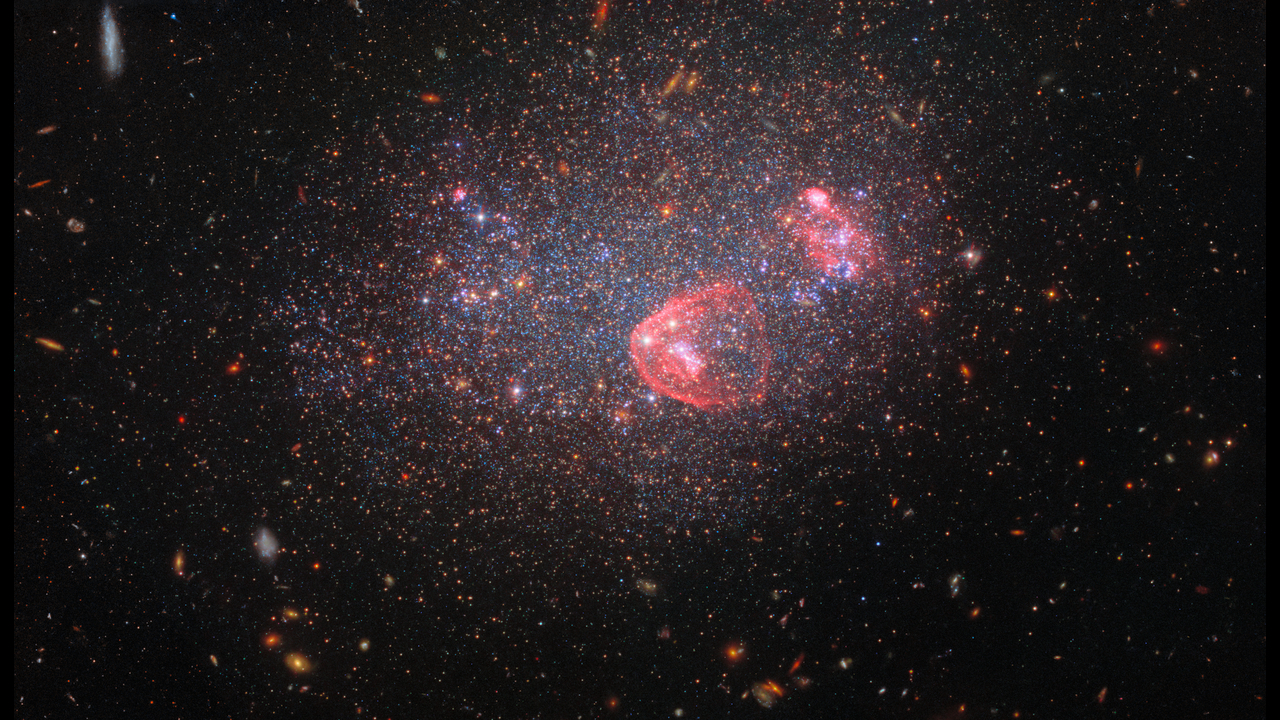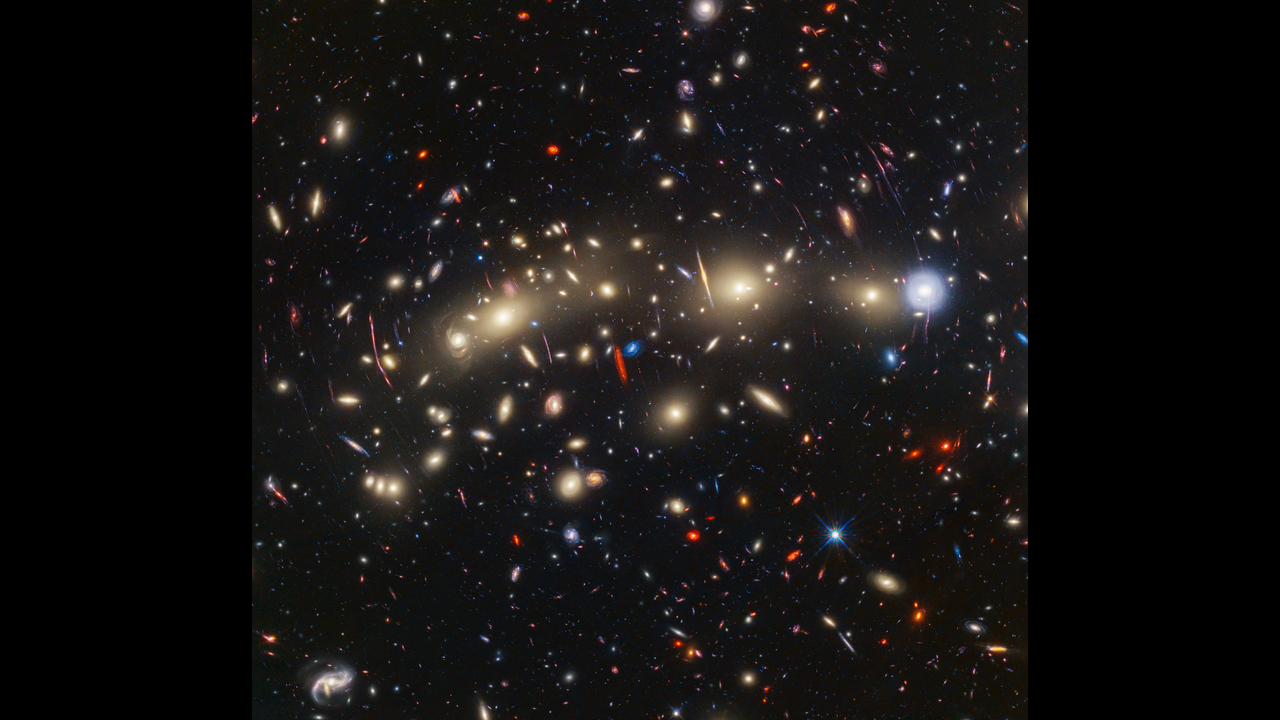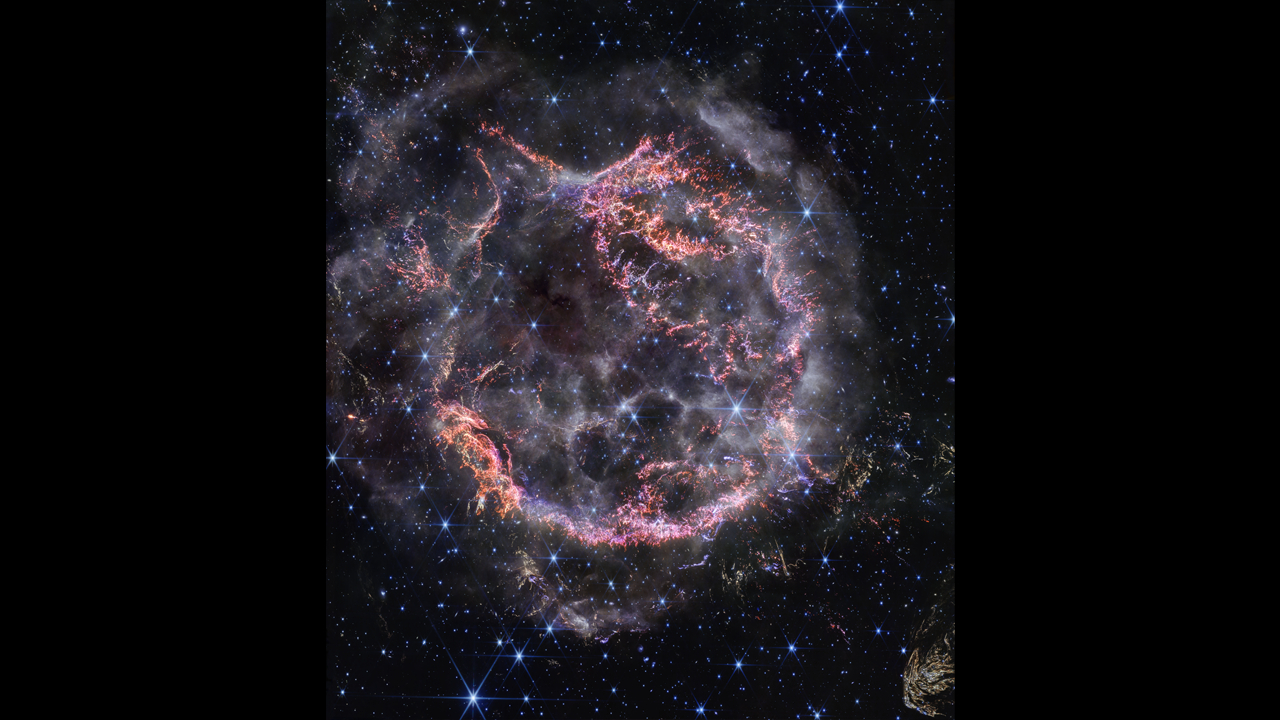Hubble Telescope gifts us a dazzling starry 'snow globe' just in time for the holidays
The snow globe–esque image was created with Hubble data from 2006 to 2021.
'Tis the season for twinkling lights, both in your neighborhood and deep in space. To celebrate the festive season, NASA has published this composite image, which resembles something of a wonderland of Christmas lights — or perhaps a colorful snow globe.
The image's subject is the billion-star-containing UGC 8091, an irregular dwarf galaxy located within the constellation Virgo, some 7 million light-years from Earth. To create the luminous, chromatic effect we see, scientists compiled data captured by the Hubble Space Telescope's Wide Field Camera 3 and Advance Camera for Surveys between 2006 and 2021.
They ran the data through 12 filters that sampled both broad and narrow wavelengths that covered mid-ultraviolet to visible red light; the red patches are thought to be interstellar hydrogen molecules, while the "sparkles" within are older stars. In the very background are other distant galaxies so far away, they almost appear to be single stars.
Related: Watch the 'Christmas Tree Cluster' twinkle in X-rays (video)



This Hubble shot isn't the only Christmas-themed image in space this year. In November, scientists used NASA's James Webb Space Telescope to study what they've dubbed the Christmas Tree Galaxy Cluster, "both because it’s so colorful and because of the flickering lights we find within it," the team's lead scientist Haojing Yan of the University of Missouri said in a statement. Looking at an image of the cluster, also known as MACS0416, it's an apt name. In fact, the Chandra X-ray Observatory recently studied its own cosmic Christmas Tree just this month as well.
And just a few weeks ago, NASA released an image of supernova remnant Cassiopeia A (Cas A) taken by Webb's NIRCam that has been likened to a Christmas bauble. That image made it into the first-ever White House Advent Calendar. "With NIRCam’s resolution, we can now see how the dying star absolutely shattered when it exploded, leaving filaments akin to tiny shards of glass behind," Danny Milisavljevic of Purdue University, leader of the research team studying Cas A, said in a statement. "It's really unbelievable after all these years studying Cas A to now resolve those details, which are providing us with transformational insight into how this star exploded."
Truthfully, we think that seeing shapes in space telescope images, Christmas-related or otherwise, is just like seeing shapes in clouds — it's all open to artistic interpretation. But there's no denying that the images are beautiful, no matter what they resemble.
Get the Space.com Newsletter
Breaking space news, the latest updates on rocket launches, skywatching events and more!
Join our Space Forums to keep talking space on the latest missions, night sky and more! And if you have a news tip, correction or comment, let us know at: community@space.com.

Space.com contributing writer Stefanie Waldek is a self-taught space nerd and aviation geek who is passionate about all things spaceflight and astronomy. With a background in travel and design journalism, as well as a Bachelor of Arts degree from New York University, she specializes in the budding space tourism industry and Earth-based astrotourism. In her free time, you can find her watching rocket launches or looking up at the stars, wondering what is out there. Learn more about her work at www.stefaniewaldek.com.









